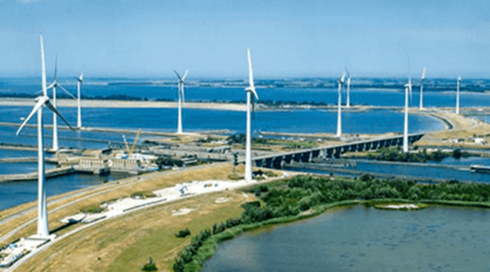3
Day in, day out Professionals help our clients bring innovations to life at the frontier of Energy, Marine & Renewables. But what is happening at the next frontier? In this blog series, Atlas’ Market Analyst Gurpreet Kaur covers trends in the Energy Transition. Next up: Hydrogen.
What is it?
Hydrogen is the lightest element in the periodic table and the most abundant chemical element in the universe. Each molecule is made up of two atoms, found in water, plants, animals, and humans. With a high energy density, it can be used as an alternative to methane (natural gas).
The International Energy Agency (IEA) outline key uses:
- Industry, oil refining, ammonia production, methanol production and steel production;
- In transport, cars, shipping, aviation, refueling stations;
- In buildings, blended into existing natural gas networks;
- In power generation, for storing renewable energy, from the variable output of wind and solar.
As such, hydrogen has a great potential as a energy source. The difficulty, however, is in scaling production due to high costs, lack of government policy for adoption and limited supportive infrastructure.
Hydrogen types
TNO describes three types of hydrogen: grey, blue and green hydrogen.
Grey Hydrogen
Almost all hydrogen produced is so-called 'grey hydrogen'. Production currently takes place via Steam Methane Reforming. Here high-pressure steam (H2O) reacts with natural gas (CH4) resulting in hydrogen (H2) and the greenhouse gas CO2.
Blue Hydrogen
The term 'blue hydrogen' is used when the CO2 released in the process of grey hydrogen production is largely (80-90%) captured and stored. This is also called CCS: Carbon Capture & Storage.
By 2030 the costs of renewable hydrogen production could be in the range of $2.3 and $1.4 per kilogram.
Green Hydrogen
Green hydrogen, also known as 'renewable hydrogen', is hydrogen that is produced with sustainable energy. The best known is electrolysis, in which water (H2O) is split into hydrogen (H2) and oxygen (O2) via green electricity.
Low-carbon hydrogen can break even with grey hydrogen between 2028-2034 at a cost of $35-50 per ton of carbon dioxide equivalent.
Initiatives
The Hydrogen Council and McKinsey & Company highlights “there are over 30 countries with roadmaps, and 228 large-scale projects, with 85% located in Europe, Asia, and Australia”. Of those, 188 are within industrial, transport or integration, those for storage and renewables only represent 40.
There is growing support for implementation. In line with the EU Green Deal, a hydrogen strategy was launched in July 2020. In the short (2020-2024) the aim is to support the installation of at least 6-gigawatts, and production of up to one-million tonnes. In the years after, hydrogen is to be integrated into the energy system, with at least 40-gigawatts and production of up to ten-million tonnes.
Selected EU member states have begun actioning and are being spurred on by energy companies, that are building infrastructure to progress scalability, Recharge provides examples of green hydrogen projects utilising offshore wind. Whilst the strategies of energy companies, can be explored here; Vattenfall, Equinor & ENGIE, Shell, Woodside, BP & Ørsted. Atlas’ Vlissingen office, which focuses on Renewable Energy, is playing a key role in providing competent professionals to key upcoming projects in the Netherlands.
Leveraging existing infrastructure and skills
There is still considerable progress to be made, the IEA outlines 7 recommendations to support scaling up. One of those is to focus on key opportunities to further increase momentum over the next decade.
a. Utilise existing ports as hubs;
b. Use existing gas infrastructure;
c. Support transport fleets, freight, and corridors;
d. Establish first shipping routes.”
Considering the synergies available from the gas and marine (ports) industries, as well as others including electricity, wind and solar, there are opportunities available for professionals. Jobs can include Gas Engineer and Electrical Engineer for example, and are suitable for those with existing transferable qualifications and skills. An exciting time to join an emerging industry due to play a critical role in the energy transition.
Sources: TNO, CNBC, Nesfircroft, Offhore Energy - DOE to assign $160M to fossil-based hydrogen projects, Equinor, Recharge, Offshore Energy - Study: Hydrogen fueling market sees dramatic growth, BBC, IEA, Hydrogen Council, Topsector Energie, Renews - Enegix signs MoU for Brazilian green hydrogen base, European Commission , Offshore Energy - USA: hydrogen coalition formed, BP, 4Coffshore, SWIC, Renews - Scottish islands secure green hydrogen funding.
Related News:
.png)
.png)


